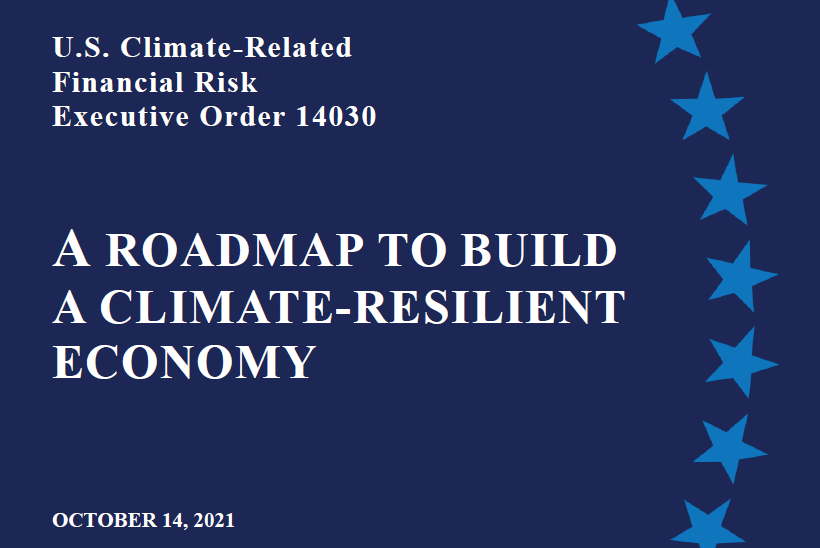The Biden Administration recently issued the 40-page executive order “A Roadmap to Build a Climate-Resilient Economy”. It seeks to chart a government-wide strategy for American efforts to prepare for financial climate change risk. The information within this executive order lays a roadmap for measuring, managing, and mitigating climate-related financial and economic risk in the federal government and federal programs. These changes are directed at federal agencies but will have an effect on the financial considerations of private organizations and individuals.

Most current investment portfolios are based on projections that the climate will remain stable. However, Americans are increasingly feeling the devastating effects of climate instability and extreme weather events. Our savings and investments are often more vulnerable than we realize due to a lack of disclosure and transparency of climate risk in loans and investments. Incorporating the physical and transition risks of climate change will make our economy more grounded to the economic realities of the climate crisis.
Summary of Important Financial Changes
This executive report pushes for an economic climate strategy that will involve big adjustments to infrastructure, supply chains, energy, and financial markets. Below we summarize a few of the most impactful elements of this executive order and related proposals:
- Promoting resilience in the U.S. financial system to climate-related financial risks.
This report urges action to develop the tools for regulators and other federal economic actors to understand and mitigate climate-related financial risks.
The Treasury Department has launched an initiative to address climate-related risks in the investment sector. This will focus on assessing the availability and affordability of insurance coverage in traditionally underserved communities and high-risk areas. In addition, the Securities and Exchange Commission (SEC) is considering recommendations for mandatory disclosure rules for public issuers to better clarify climate risks for investments.
- Incorporating financial climate risk into federal financial management.
Federal agencies are working to develop climate risk assessments and disclosure requirements. The President’s Budget for 2023 will include an assessment of the federal government’s climate risk exposure and long-term impacts on the budget.
- Using federal procurement to address climate risks.
The Biden Administration seeks to lead by example by evaluating the climate impact of federal investments. Amendments are being considered on the Federal Acquisition Regulation (FAR) to ensure that major federal agency procurements minimize the risk of climate change. This proposal would require that the social cost of greenhouse gas emissions be considered in procurement decisions where it is appropriate and feasible.
- Protecting life savings and pensions from climate risk.
The Biden Administration has announced proposed amendments to the Employee Retirement income Security Act of 1974 to help safeguard savings and pensions from climate risk. This calls for more recognition by fiduciaries of climate change and other environmental, social and governance factors, called “ESG factors”. The Department of Labor is also working to protect the Thrift Savings Plan from climate risks.
- Incorporating risk into federal lending and underwriting.
The Department of Housing and Urban Development (HUD) is incorporating climate considerations into the origination of single-family mortgages to better address climate risks within the department’s loan portfolios. The VA and USDA are similarly reevaluating their housing loan programs.
- Building resilient infrastructure and communities.
More than 20 agencies have released climate adaptation and resilience plans to help safeguard federal investments from climate change.
The National Flood Insurance Program (NFIP) standards will be updated to help communities reduce flood risk through construction and land use practices. NOAA online services have also been updated to make them more useful and accessible to the public.
Conclusion
These wide and sweeping guidelines within “A Roadmap to Build a Climate-Resilient Economy” will affect dozens of federal agencies and programs. Likely many private agencies will follow with similar changes to the way that they manage and incorporate climate-related financial risks into their portfolios and investments. You can follow their example and check your ClimateCheck Property report to better understand your individual exposure to the physical and transition risks of climate change.